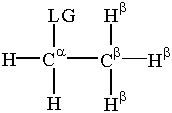Please wait while we process your payment
If you don't see it, please check your spam folder. Sometimes it can end up there.
If you don't see it, please check your spam folder. Sometimes it can end up there.
Please wait while we process your payment

By signing up you agree to our terms and privacy policy.
Don’t have an account? Subscribe now
Create Your Account
Sign up for your FREE 7-day trial
By signing up you agree to our terms and privacy policy.
Already have an account? Log in
Your Email
Choose Your Plan
Individual
Group Discount
Save over 50% with a SparkNotes PLUS Annual Plan!
 payment page
payment page
Purchasing SparkNotes PLUS for a group?
Get Annual Plans at a discount when you buy 2 or more!
Price
$24.99 $18.74 /subscription + tax
Subtotal $37.48 + tax
Save 25% on 2-49 accounts
Save 30% on 50-99 accounts
Want 100 or more? Contact us for a customized plan.
 payment page
payment page
Your Plan
Payment Details
Payment Summary
SparkNotes Plus
You'll be billed after your free trial ends.
7-Day Free Trial
Not Applicable
Renews April 22, 2025 April 15, 2025
Discounts (applied to next billing)
DUE NOW
US $0.00
SNPLUSROCKS20 | 20% Discount
This is not a valid promo code.
Discount Code (one code per order)
SparkNotes PLUS Annual Plan - Group Discount
Qty: 00
SparkNotes Plus subscription is $4.99/month or $24.99/year as selected above. The free trial period is the first 7 days of your subscription. TO CANCEL YOUR SUBSCRIPTION AND AVOID BEING CHARGED, YOU MUST CANCEL BEFORE THE END OF THE FREE TRIAL PERIOD. You may cancel your subscription on your Subscription and Billing page or contact Customer Support at custserv@bn.com. Your subscription will continue automatically once the free trial period is over. Free trial is available to new customers only.
Choose Your Plan
This site is protected by reCAPTCHA and the Google Privacy Policy and Terms of Service apply.
For the next 7 days, you'll have access to awesome PLUS stuff like AP English test prep, No Fear Shakespeare translations and audio, a note-taking tool, personalized dashboard, & much more!
You’ve successfully purchased a group discount. Your group members can use the joining link below to redeem their group membership. You'll also receive an email with the link.
Members will be prompted to log in or create an account to redeem their group membership.
Thanks for creating a SparkNotes account! Continue to start your free trial.
We're sorry, we could not create your account. SparkNotes PLUS is not available in your country. See what countries we’re in.
There was an error creating your account. Please check your payment details and try again.
Please wait while we process your payment

Your PLUS subscription has expired
Please wait while we process your payment
Please wait while we process your payment

Leaving Groups and Nucleophiles
The leaving group is a component of every substitution and elimination reaction discussed in this SparkNote. As such, it makes sense to learn the characteristics of a good leaving group.
In any substitution or elimination reaction, electrons from a nucleophile,
carbon-hydrogen bond, or the solvent break a carbon-leaving group bond. Here
the leaving group is abbreviated as "LG."

There is a bit of terminology dealing with the leaving group important to
substitution and elimination. The α-carbon is the carbon atom
bonded to the leaving group. β-carbons are attached to the
α-carbon. The hydrogens attac hed to the β-carbon are called
β-hydrogens. This terminology is vitally important for our
discussion of substitution and elimination reactions.

Let's define a good leaving group as one that leaves easily. Then the effectiveness of a leaving group increases with the group's energetic stability after it has left. Thus a weak base is a better leaving group than a strong base. Likewise, a m olecule that is neutral after leaving is generally a better leaving group than one that is negatively charged after leaving.
Halides and the tosyl group (-OTs) are examples of commonly used leaving groups. In general, if the group is relatively stable after leaving the molecule with the C-LG bond's electrons, it's a good candidate for a leaving group.
The nucleophile is a key part of every substitution reaction. In these reactions, it is the group that "substitutes" for the leaving group. A nucleophile has a lone pair of electrons that makes up the molecule's business end. A polarizable nucleophile contribute more negative charge from its lone pair and has more punch than its non-polarizable fellow. On the same token, good nucleophiles tend to be negatively charged, but can also be neutral.
For nucleophiles that share the same attacking atom, nucleophilicity roughly follows
Bronsted basicity.

The iodide ion is a very good nucleophile that is only a weak base. Iodide is often a better nucleophile than ethoxide, but is a weak enough base to be a good leaving group.
Nucleophilicity is solvent dependent. Polar solvents allow nucleophiles to become highly polarized. They increase nucleophilicity. Protic solvents decrease nucleophilicity by hydrogen bonding to the nucleophile's lone pair end. The hydrogen bonds
blunt the molecule's nucleophilicity and must be broken
before nucleophilic attack can occur. For these reasons, nucleophilicity is greatest in polar, aprotic solvents.

Please wait while we process your payment

